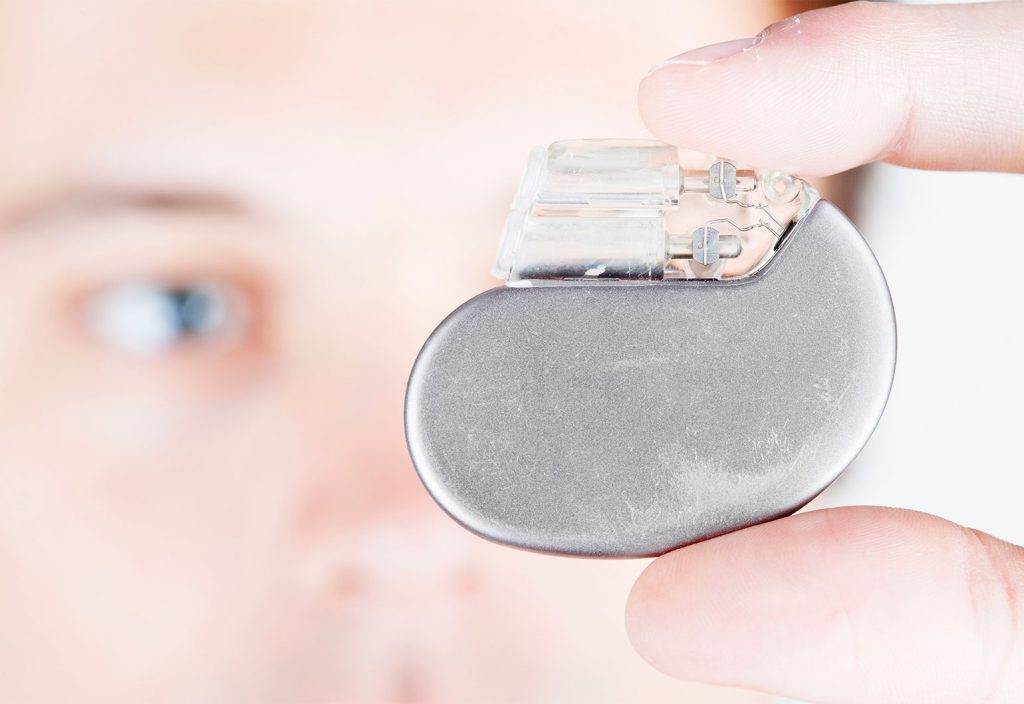In 1958, engineer Dr Wilson Greatbatch made an error that led to a life-saving invention and changed health care forever.
Working in his backyard barn in Clarence, New York, Greatbatch designed the first working pacemaker. More than 60 years later, a million of the devices are implanted each year around the world.
Greatbatch was working on a piece of equipment to record heart rhythms when he reached into a box of parts for a resistor to complete the circuitry. He accidentally pulled out one the wrong size, and discovered that when he installed it, the circuit it produced emitted intermittent electrical pulses — just like the human heart.
“The oscillator required a 10 KΩ resistor at the transistor base. I reached into my resistor box for one, but I misread the colour coding and got a 1 MΩ resistor by mistake,” he later explained.
Greatbatch plugged in the resistor and the circuit started to “squeg” with a 1.8 millisecond pulse followed by a 1 second interval during which the transistor was cut off and drew almost no current.
“I stared at the thing in disbelief,” Greatbatch said.
A healthy human heart beats an average of 50 to 70 times per minute — but for one not working properly, every second begins to matter. Greatbatch quickly realised that this small device could drive a human heart, but it took heart surgeons much longer to believe in his idea.
Backyard operation
Greatbatch presented his invention to William Chardack, a surgeon at Buffalo’s Veterans Administration Hospital. The only existing apparatus used to regulate heartbeat was the size of a television set and painful for recipients to use.
The two began refining and shrinking the pacemaker, and experimenting with materials to shield it from bodily fluids. Greatbatch’s wife, Eleanor, also assisted the backyard operation by administering shock tests for the pacemaker’s transistors by taping them to a bedroom wall.
On 7 May 1958, doctors at the hospital in Buffalo demonstrated that Greatbatch’s invention could control a dog’s heartbeat. Within two years, they were able to successfully trial it in 10 human patients, including two children.
“I seriously doubt if anything I ever do will ever give me the elation I felt that day when my own two-cubic-inch piece of electronic design controlled a living heart,” Greatbatch said.
Never fearing failure
The self-described “humble tinkerer” wasn’t content with patenting and licensing the device, and soon returned to his design to address a crucial limitation: the problem of zinc-mercury batteries, which could drain in as little as two years.
Greatbatch acquired rights to a lithium iodine design invented in 1968, with one significant problem — it was potentially explosive. By 1972, he had re-engineered the device into a compact, corrosion-free container that could survive in the human body for at least a decade.
The battery-making company he founded in the process, today called Greatbatch Inc., became a leading power-component supplier for the wider medical device industry.
Greatbatch went on to patent more than 300 inventions, chief among them a long-life lithium battery used in a broad range of medical implants.
Later, he turned his mind to designing tools used in AIDS research, and became interested in environmental causes, which saw him create a solar-powered canoe.
“Don’t fear failure, don’t crave success. Never avoid doing something because you fear it won’t work,” he once remarked.
In his later years he toured schools to inspire students, as well as investing a significant amount of time and money into developing fuels from plant sources, and investigating helium-based fusion reactions for power generation.
Tinkering to the end, at the time of his death in 2011 he was working on a cure for AIDS using genetic engineering, as well as a nuclear-powered spaceship to send people to Mars.
“Nine things out of 10 don’t work,” Greatbatch told the Associated Press in 1997. “The tenth one will pay for the other nine.”
Greatbatch had a bachelor’s degree in electrical engineering from Cornell University and a master’s degree from the University at Buffalo, and received seven honorary doctorates during his long career.
In 1985, the United States’s National Society of Professional Engineers named Greatbatch’s invention one of the 10 greatest engineering contributions to society of the last 50 years.
“I’m beginning to think I may not change the world, but I’m still trying,” he said in 2007, when his health was ailing.
